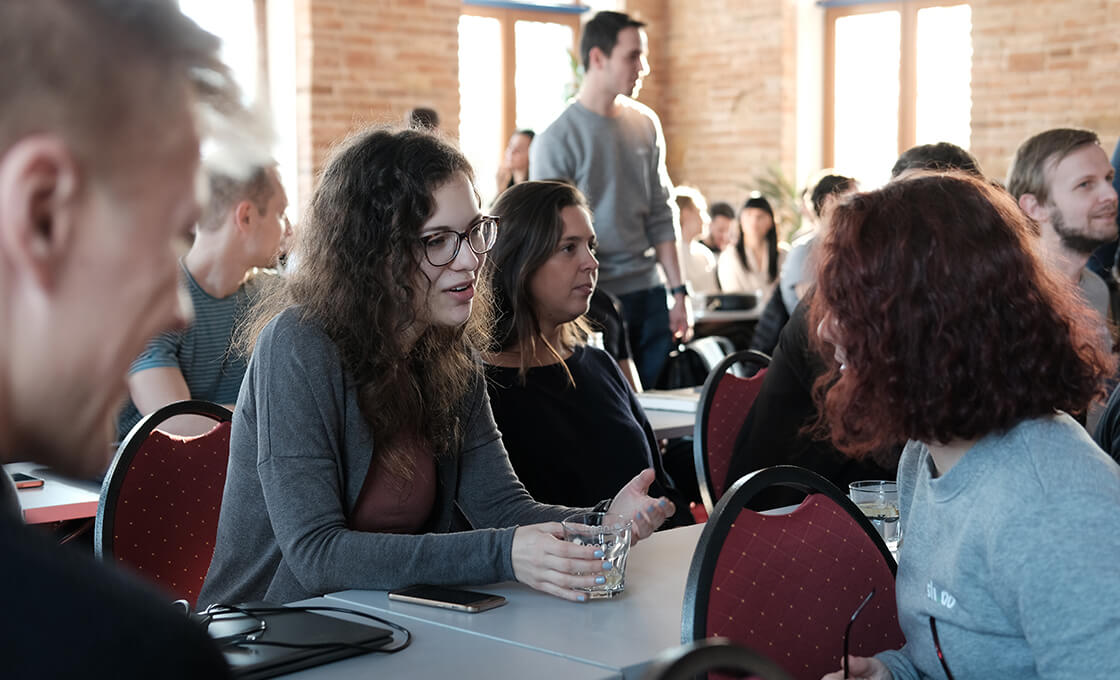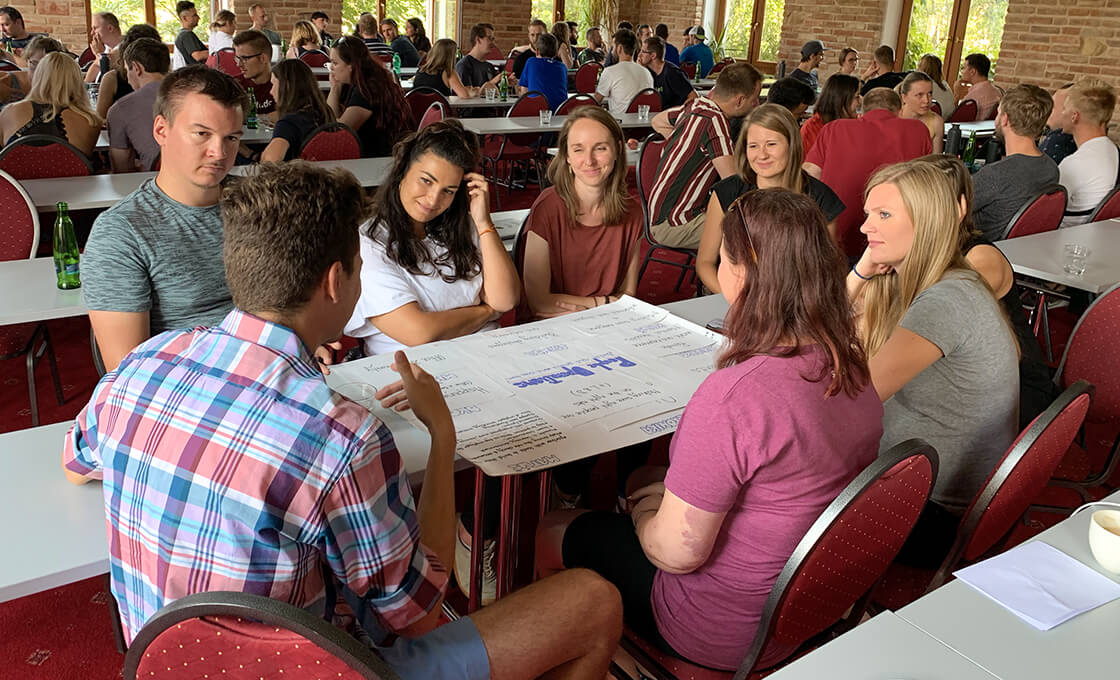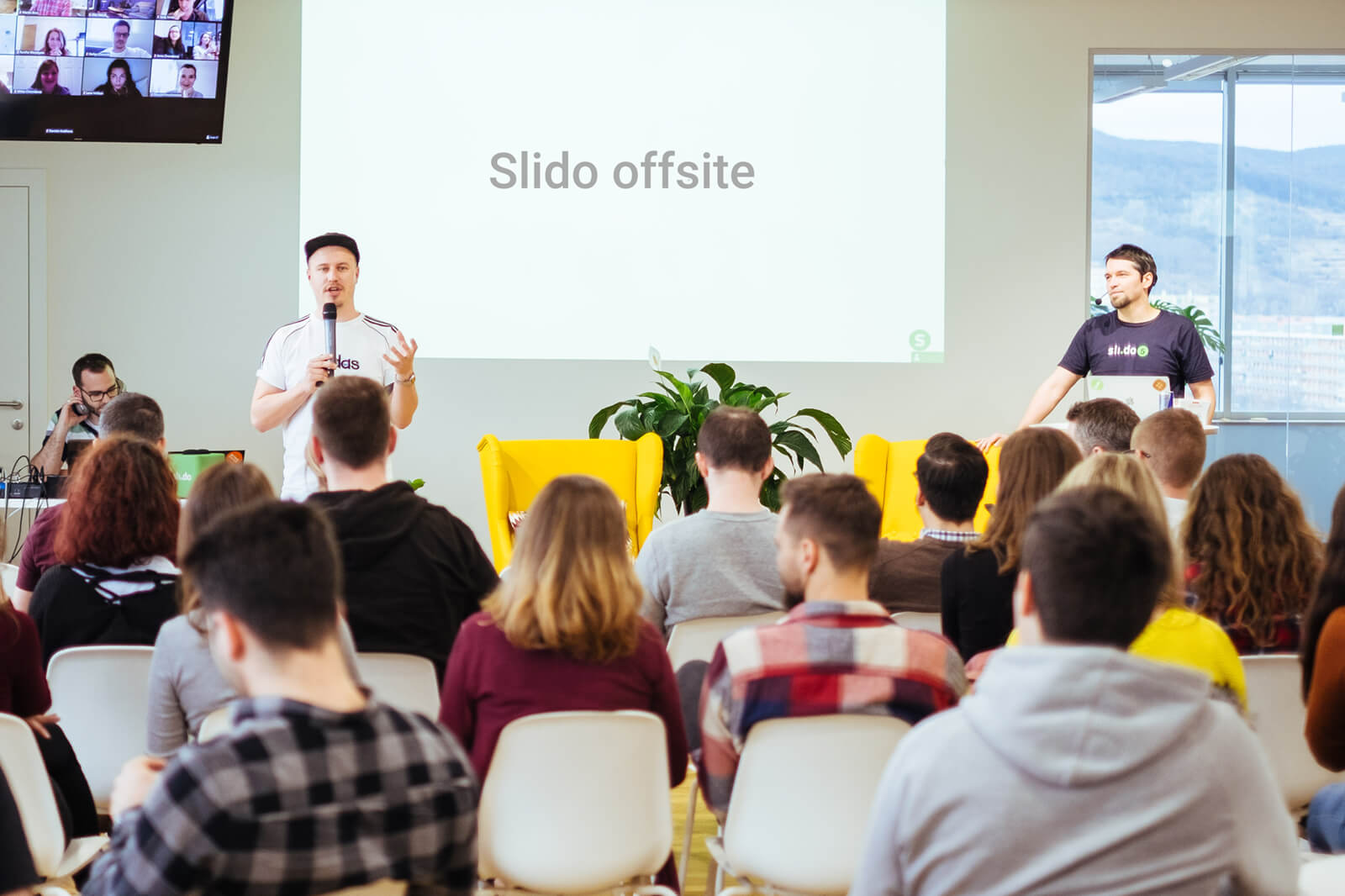Moderating company events will teach you many lessons, but there’s one that has become my North Star:
“How you present the content is as important as the content itself.”
And the stakes are pretty high with events like company retreats.
You relocate all your manpower for one or two days that are packed with content and activities. The executive team wants to align the whole team and set the members up for success in the next season.
And it is up to you, as a moderator, to help them achieve that.
Your role is to make sure that (1) the key message is communicated, (2) the team is engaged, and (3) people are having fun.
So how do you go about that?
In this article, I put down some of the moderation activities I used at our most recent offsite.
They are for anyone who is asked to moderate their company’s next event as well as for moderators with more experience under their belts.
1. Set the theme with an exceptional intro
How you open the event has a huge impact on how your teammates will perceive the rest of the agenda. It’s your one chance to introduce the main theme, set the context and get people excited.
The key message of our last company retreat was growth through alignment.
As a big fan of analogies, I decided to use one to introduce this message to the team.
But instead of talking about it, I thought that it would be much more memorable if I let people experience the power of alignment.
So for the kick-off, I invited the Slido band (made up of our employees) to perform our own version of the famous “In the Jungle” song and asked everyone to join in, clapping and snapping their fingers.
But it wasn’t a self-serving, happy-clappy exercise.
Like with the musicians in the band (team members), it demonstrated that we can’t make good music (grow as a company) and delight our audience (customers) without being aligned and playing to the rhythm.
By having people keep up with the band for the entire length of the song, we managed to demonstrate how difficult, yet important, it is to be on the same page in order to achieve our goals.
As a bonus, we tweaked the lyrics with references to our team members and displayed them on the screen along with funny pictures, resulting in some giggles in the audience.
2. Acknowledge both the newbies and the veterans
When the singing was over, I wanted to remind people that the retreat is also about the team and getting to know each other better.
When it comes to sparking some engagement here, the simplest ways are often the most effective ones.
I posed the question “Which offsite is this for you?” and asked people to stand up when I called out their number.
For example, I said, “First. For whom is this their first offsite?”
A group of newbies and a few colleagues who usually work remotely stood up.
They were clearly visible in the audience.
I commented, “Make sure that they feel welcome. Meet them, talk to them, show them around.”
Then I continued calling out the numbers (second, third, fourth. . .) to include the rest of the team. Finally, I finished with our Slido veterans who’ve been with the company the longest and invited them to engage with the newbies.
This little activity acted as an icebreaker and encouraged everyone to make the most of their time together and talk to people they normally don’t talk with.
Related: How to Plan an Offsite Meeting Your Employees Will Love
3. Let people prepare for the Q&A in pairs
Once the stage was set, it was time to bring on the speakers.
First, our executives presented some upcoming major changes in project management in the company.
It was a big shift for us, moving from a guerilla planning style to a more structured one.
In short, this topic was big news for the team.
I knew they had tons of questions but they needed some time to digest what they had just heard.
So instead of having people ask the questions right after the talk, I asked them to take two minutes and talk to their neighbor about their immediate thoughts.

Then I instructed them to think about a question they wanted to ask and submit it to Slido for everyone else to see, as well as upvote the questions of others that they wanted to support.
In a few moments, we went from zero to almost 30 relevant questions and concerns.
Along with our CEO and our newly appointed Project Management Office lead, we addressed about one third of those questions right on the spot.
Since the topic sparked a wide interest, we decided to turn it into one of the roundtable discussions.
More on that in point 6 below.
4. Throw in a fun element in between presentations
If you want to keep people’s attention during a string of business presentations, you need to add an element that will be about them, something they can look forward to.
In our case, it was a summer photo competition.
The ideal time to do these activities is after the breaks when everyone meets back in the room.
And that’s what we did after the first morning coffee break.
In the week leading up to the retreat, we announced the competition on Slack and set a deadline to collect our colleagues’ holiday pictures.
At the offsite, I presented the adventures on the screen, along with the name of the contestant and where each one was taken.

After that, we got to choose the winner. We used a live poll on Slido where I put the names of all 24 candidates and let people vote for their favorite.
Then I revealed the results on a screen and gave the winner a prize: a disposable camera.
It was fun to do and energized people for the next round of presentations.
5. Encourage people to network over lunch
To achieve our goal of getting people to connect with each other, I didn’t want to leave the 1-1/2-hour lunch break to chance. So I gave our colleagues an assignment. I told them to sit with people they normally don’t talk to and ask them, “What’s the weirdest thing about you?”
With many introverts among our employees, I knew this would be a tough one. It needed an extra push. So during lunch, I walked around among the tables listening to conversations, sharing what I’d already heard at other tables to encourage people to open up.
The most exciting part was the debriefing. After we gathered in the common room again, I was curious to learn what strange things people had learned about their colleagues.
We started with a stand-up poll: “On a scale of 1 to 10, how weird is this company?”
To make sharing stories more fun, we played a game. We started tossing around the Catchbox with the Slido band playing in the background. When the music stopped, the person holding the cube had to share a story he or she had heard over lunch. (Credit for this activity goes to brilliant moderator Jan-Jaap In der Maur.)
We repeated it around five times and learned some real quirky stuff!
As it turns out, one of our colleagues likes to grow mushrooms in his fridge to collect fermented milk, another one can’t resist breaking into abandoned buildings.
So there was lots of weirdness and lots of fun.
6. Run group discussions to spark off peer-to-peer learning
We’ve learned over time that the most popular content for our employees is something to which they can contribute. That’s why roundtables or group discussions are often a safe bet for our company retreat.
This time, we tied them in with our overarching goal: reaching growth through alignment. As we’re getting bigger as a company, it’s easy to lose track of what different teams are doing. That’s why we wanted teams to learn about others’ roles and have a chance to ask them anything that’s on their minds.

We hosted 10 roundtables, each run by two members from a specific team. The groups had 35 minutes for the discussion, after which our employees could swap tables and talk to a different team.
7. Reiterate the main message at the end
When the day was almost over and we had to wrap things up, we used a bit of moderated interaction one last time.
After the roundtable session, I got people together for a quick summary. I used Catchbox again and invited our colleagues to share some interesting facts they’d learned about the other teams.
For example, they found out that we run about 700 automated tests or that only 2.5% of applicants get accepted to Slido.
Then we got to the finale.
You want the teams to walk out of the room with the main message on their minds.
To achieve this, I invited our CEO Peter Komornik back on stage and let him reiterate three points for everyone to remember.
With this, we wrapped up the official part of the program.
A few extra tips:
- Nail the beginning. Practice it over and over again. It’s the most important moment for you as a moderator.
- Use paper cards for your notes. Looking into a smartphone creates a mental barrier between you and the audience.
- Run a short Q&A after each presenter to break the dynamic of the session. Start with your own question so people have a chance to formulate theirs.
- Get people on Slido at the start to make it easy for the speakers when they start the polling.
- Watch the time and step in if someone is about to run over. Move closer physically to signal that they are running out of time.
Company retreats are the most strategic platforms for business growth and you don’t want to leave them to chance. With these moderation tips, you can ensure that the key message gets across, you move closer to alignment and your team has fun along the way.




